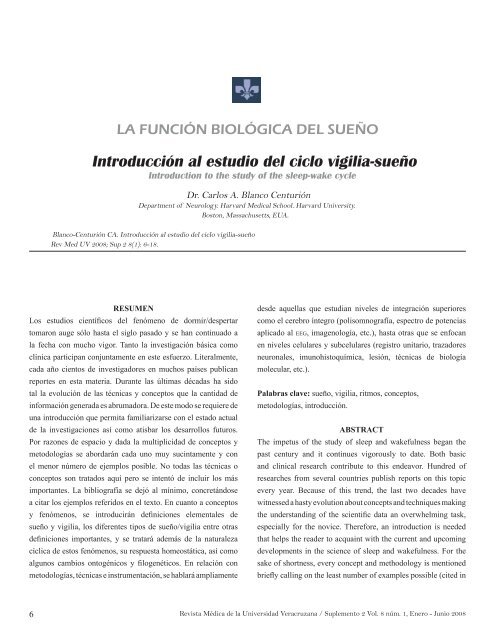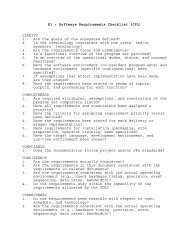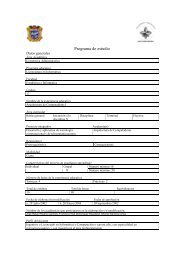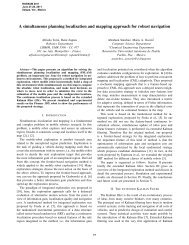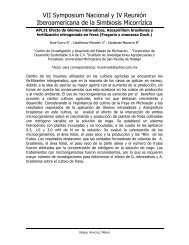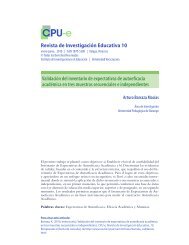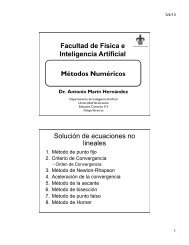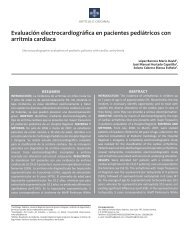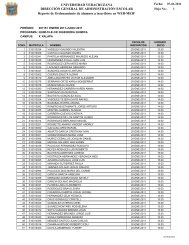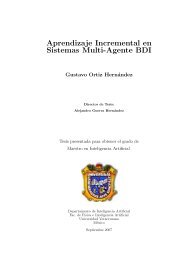Suplemento 2 Vol 8 No 1.indd - Universidad Veracruzana
Suplemento 2 Vol 8 No 1.indd - Universidad Veracruzana
Suplemento 2 Vol 8 No 1.indd - Universidad Veracruzana
You also want an ePaper? Increase the reach of your titles
YUMPU automatically turns print PDFs into web optimized ePapers that Google loves.
6<br />
Revista Médica<br />
LA FUNCIÓN BIOLÓGICA DEL SUEÑO<br />
Introducción al estudio del ciclo vigilia-sueño<br />
Introduction to the study of the sleep-wake cycle<br />
Dr. Carlos A. Blanco Centurión<br />
Department of Neurology. Harvard Medical School. Harvard University.<br />
Boston, Massachusetts, EUA.<br />
Blanco-Centurión CA. Introducción al estudio del ciclo vigilia-sueño<br />
Rev Med UV 2008; Sup 2 8(1): 6-18.<br />
RESUMEN<br />
Los estudios científicos del fenómeno de dormir/despertar<br />
tomaron auge sólo hasta el siglo pasado y se han continuado a<br />
la fecha con mucho vigor. Tanto la investigación básica como<br />
clínica participan conjuntamente en este esfuerzo. Literalmente,<br />
cada año cientos de investigadores en muchos países publican<br />
reportes en esta materia. Durante las últimas décadas ha sido<br />
tal la evolución de las técnicas y conceptos que la cantidad de<br />
información generada es abrumadora. De este modo se requiere de<br />
una introducción que permita familiarizarse con el estado actual<br />
de la investigaciones así como atisbar los desarrollos futuros.<br />
Por razones de espacio y dada la multiplicidad de conceptos y<br />
metodologías se abordarán cada uno muy sucintamente y con<br />
el menor número de ejemplos posible. <strong>No</strong> todas las técnicas o<br />
conceptos son tratados aquí pero se intentó de incluir los más<br />
importantes. La bibliografía se dejó al mínimo, concretándose<br />
a citar los ejemplos referidos en el texto. En cuanto a conceptos<br />
y fenómenos, se introducirán definiciones elementales de<br />
sueño y vigilia, los diferentes tipos de sueño/vigilia entre otras<br />
definiciones importantes, y se tratará además de la naturaleza<br />
cíclica de estos fenómenos, su respuesta homeostática, así como<br />
algunos cambios ontogénicos y filogenéticos. En relación con<br />
metodologías, técnicas e instrumentación, se hablará ampliamente<br />
desde aquellas que estudian niveles de integración superiores<br />
como el cerebro íntegro (polisomnografía, espectro de potencias<br />
aplicado al EEG, imagenología, etc.), hasta otras que se enfocan<br />
en niveles celulares y subcelulares (registro unitario, trazadores<br />
neuronales, imunohistoquímica, lesión, técnicas de biología<br />
molecular, etc.).<br />
Palabras clave: sueño, vigilia, ritmos, conceptos,<br />
metodologías, introducción.<br />
ABSTRACT<br />
The impetus of the study of sleep and wakefulness began the<br />
past century and it continues vigorously to date. Both basic<br />
and clinical research contribute to this endeavor. Hundred of<br />
researches from several countries publish reports on this topic<br />
every year. Because of this trend, the last two decades have<br />
witnessed a hasty evolution about concepts and techniques making<br />
the understanding of the scientific data an overwhelming task,<br />
especially for the novice. Therefore, an introduction is needed<br />
that helps the reader to acquaint with the current and upcoming<br />
developments in the science of sleep and wakefulness. For the<br />
sake of shortness, every concept and methodology is mentioned<br />
briefly calling on the least number of examples possible (cited in<br />
Revista Médica de la <strong>Universidad</strong> <strong>Veracruzana</strong> / <strong>Suplemento</strong> 2 <strong>Vol</strong>. 8 núm. 1, Enero - Junio 2008


